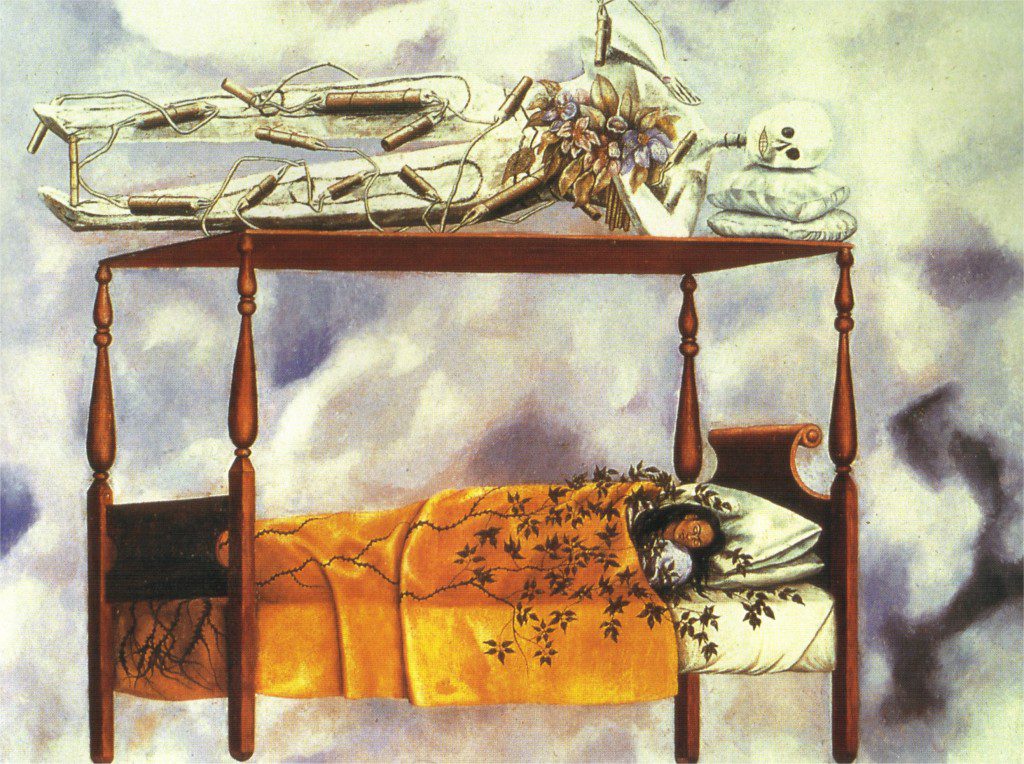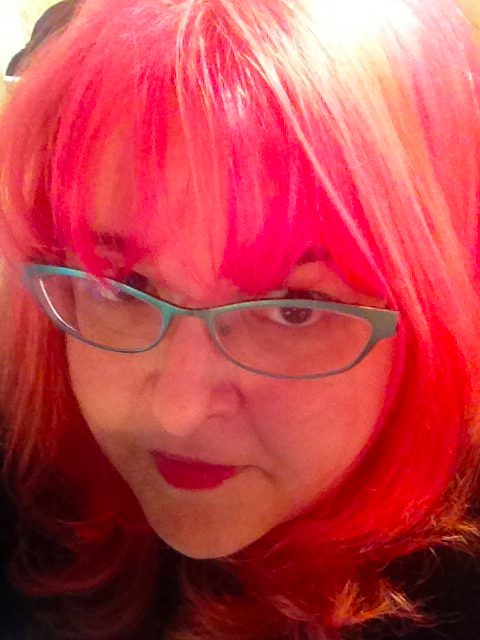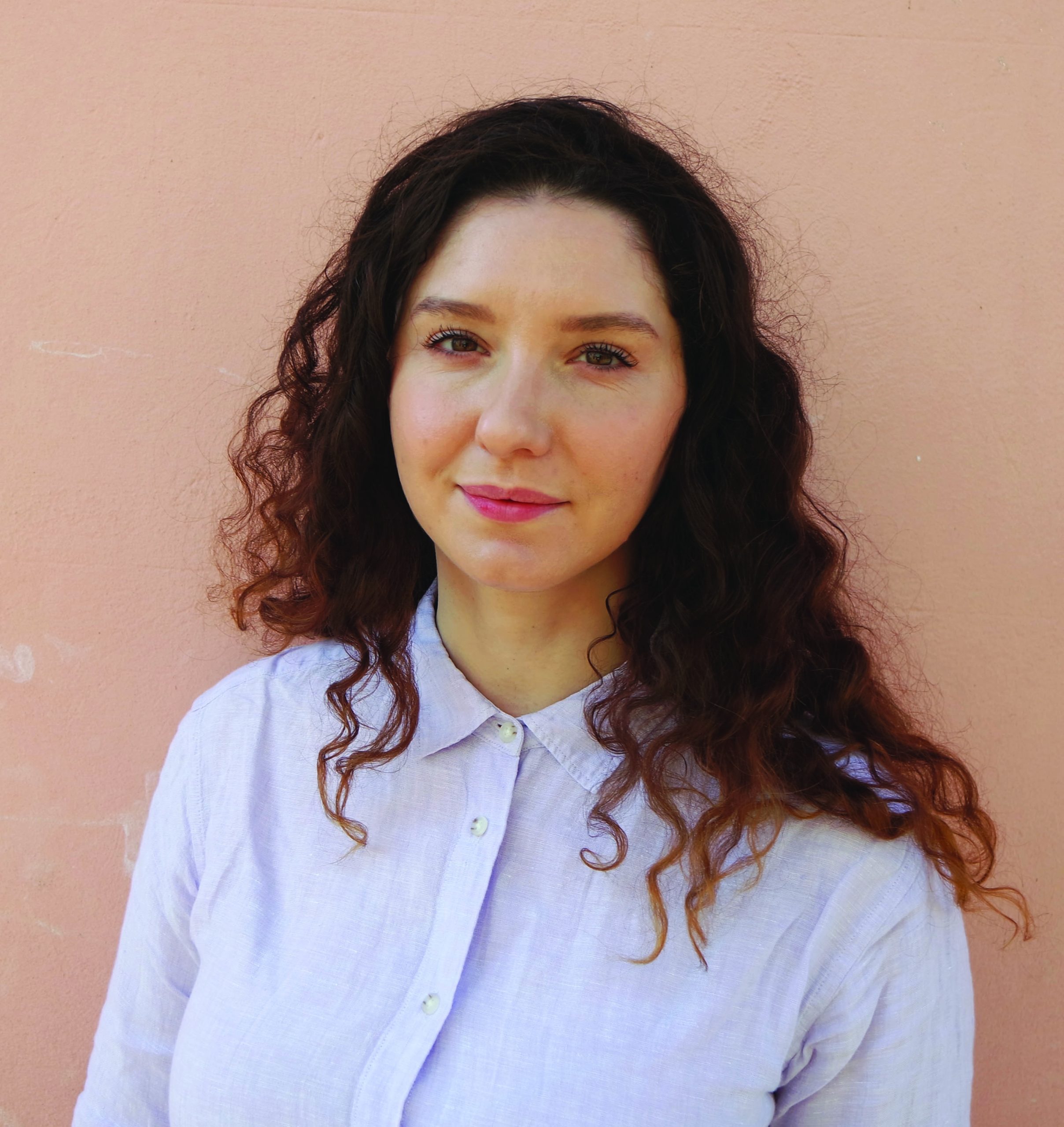When I was a child in the ’70s I used to fight with my mother about The Brady Bunch. All my friends were watching the re-runs and I wanted to watch it too. My mother forbade it, citing the clichéd roles of all the women in the show. She was clear that the limited model for women established by The Brady Bunch and shows of that ilk were not suitable entertainment when women were fighting against the same limiting stereotypes in real life. She argued it was simply unacceptable to watch a show where the only adult women regularly being portrayed were either a housewife or a maid. On the other hand, with its lead of a single professional woman who was actively dating, she had no objection to me watching a show like Mary Tyler Moore.
This anecdote from my past occurs to me as I flip channels and read on Facebook and Twitter what all my friends are watching. I see the Internet blow up with each new episode of Game of Thrones and True Detective. I see many of my friends, many of my feminist friends, enthusiastically cheering each new installment. I see and hear the joy my friends get from hunkering down for less critically acclaimed fare like a marathon of Law and Order: SVU or the latest CSI. I like these people and would like to share in the communal pleasure, just as I like a good story and often feel I’m missing out. I worry that I’m being difficult, that it doesn’t make any difference. Ultimately though, I’m not comfortable with the cost associated with membership in the club of those watching woman after woman brutalized.
Show after show seems to be driven by similar recurring narrative. A little girl is abducted and murdered; a teenage girl is raped; a wife is beaten by her husband; it is woman as victim over and over and over again.
If she were still in charge of my viewing habits, my mother wouldn’t let me watch these shows any more than she allowed me to watch shows with narrow professional depictions or sexual objectification of women. I wonder how the entertainment value of narratives driven by violence against women undermines the message that that violence against women is real, it is serious, and it is pervasive. I wonder how the abundance of films and TV shows with these narratives desensitizes all of us to the global epidemic of violence against women. I wonder what the prevalence of young, thin, white women in television says about violence against women that do not fit in those categories.
Do we dilute the fight by participating in the perpetuation of such narratives? This is, of course, what we do when we watch. Until the time comes when I can definitively answer these question in a way that I don’t believe I’m part of the problem by watching (or even better, a time comes when the questions are no longer necessary because we are not living in a world that mutilates and butchers its women) I am choosing not to watch. I’ve turned off the shows and films (and songs and set down the books) that focus on and are driven by the narrative of woman as victim—unless of course they are somehow advancing a feminist perspective, told through a sharp feminist lens. I want to be part of the solution, not part of the problem, and I’m increasingly convinced that I am part of the problem when I vie to watch yet another woman killed, raped, tortured.
It is a hard decision. It is not even the fact that women as victim narratives are frequently just lazy. As Zoe Chevat says in her review of the movie Riddick, “There are other ways to make us dislike a bad guy, and the constant use of violence against women as emotional leverage for the audience is a cheap trick.”
What troubles me is not the trick itself, but how often this particular trick is employed. Crime dramas routinely jumpstart the story with a woman being victimized. Medical dramas almost always have a plot line about a rapist on the loose or and abusive spouse or parent at some point or another. Even shows aimed at teens and young adults make use of this tactic, sometimes in the proverbial ‘very special episode.’ It is this onslaught of violence against women as entertainment that has me saying, “no more.” “And when a mystery show is about disposable female bodies, and the women in it are eye candy, it’s a drag,” as Emily Nussbaum cannily observed in the New Yorker in a critique of True Detective. No more to the narrative driven by women as the victim of violence , a narrative I believe reinforces the role of women as victims in our society, even as feminists are fighting both violence against women and against being cast in the victim role.
Medical dramas almost always have a plot line about a rapist on the loose or and abusive spouse or parent at some point or another. Even shows aimed at teens and young adults make use of this tactic, sometimes in the proverbial ‘very special episode.’ It is this onslaught of violence against women as entertainment that has me saying, “no more.” “And when a mystery show is about disposable female bodies, and the women in it are eye candy, it’s a drag,” as Emily Nussbaum cannily observed in the New Yorker in a critique of True Detective. No more to the narrative driven by women as the victim of violence , a narrative I believe reinforces the role of women as victims in our society, even as feminists are fighting both violence against women and against being cast in the victim role.
This is not to say that violence against women should never be depicted in movies or television. Documentary accounts of violence against women and girls are a critical tool in fighting that violence. I’ve long argued that were it possible, a 24 hour channel showing actual rapes, actual episodes of childhood sexual abuse, actual torture and rape of women and the horror and fear and pain of these women would do more to eradicate these scourges than any other intervention. There may be a small minority of people that would find such a channel titillating, a chilling thought but not one that outweighs the benefits, because for the vast majority of individuals seeing actual violence against women without a stylized set and a soothing plot would go a long way towards mobilizing a groundswell of public action.
During my work in the field of violence against women—both sexual violence in the US and global human rights violations like acid attacks, rape as a tool of war, honor killings—I worked specifically on articulating the stories of the victims of these horrors and using actual visual depictions of brutalized women to tell the story of violence against women. My work for both a rape crisis center and an international women’s human rights project was focused on raising support from domestic audiences for our work. Again, I’m less concerned that we will fetishize violence than we will ignore it. I believe that if people actually witnessed the actual pain of women and girls—instead of entertaining, sanitized, depictions—we would rise up to effect change.
A single show with a woman who is the victim of violence for “entertainment” isn’t the problem. However, with show after show employing victimization of women as a plot device it just doesn’t reflect the wide range of actual women’s experience. Instead, it reinforces the narrative of woman as victim in real life. It reinforces that women are to be abused and avenged. Joanne Clarke Dillman’s book Women and Death in Film, Television, and News makes the point “The cultural work that dead women perform in visual texts. Across the visual field, the bodies of dead women have both a haunting power and a disciplining function….their use of images of dead women has the symbolic effect of forcing women’s immobilization while also reaffirming constraints on women within still powerful patriarchal structures.” Ann Hornaday suggest in the Washington Post that The Silence of the Lambs marks the turning point where subsequent TV shows and movies began to one up eacth other in terms of both body count and depravity.
Mike White, the writer and director of Enlightened, among other shows, wrote in a New York Times Op-Ed piece about the power film has “to capture our imaginations, shape our thinking and inform our choices, for better and for worse.” It would be naïve to think that the repeated portrayal of violence against woman, each instance trying to be more extreme than the last, is somehow exempt from this ability to influence. The consistent, if not constant, bombardment of woman as victim that we receive from too many television shows reinforces this perception of women in the real world. We don’t accept similar limiting depictions in other areas, why should we accept it in regards to violence and women? Grey’s Anatomy would be laughed off the air as dangerously outdated if all of the doctors were men and all of the nurses were women. Any crime drama foolish enough to make all major characters male with women appearing as either sex objects or not at all would find itself the target of well-deserved protest. Why then are we comfortable with women routinely being cast as the victims of violence? Why don’t we see that as sexist? Where is the outrage? Where is the derision? Feminists have fought for decades, and made great strides, against restrictive professional roles for women and sexual objectification in real life and in the way women are depicted in entertainment. We have fought and continue to fight violence against women. Why do we, save for occasional, momentary outcry over a scene or episode, spare the victimization of women as entertainment from our efforts?
Saddie Gennis attempts to answer some of these questions for one show in particular in her TV Guide article, “7 Reasons Why Women Love Law & Order: SVU So Much.” She hypothesizes that, among other things, the show serves as wish fulfillment. Justice may not always be served, but it usually is and the people tasked with finding and dispensing that justice always have the victims best interest at heart. She suggests the show may even help victims of physical and /or sexual abuse by demonstrating that they are not alone. These are noble goals and a great reason to tune in to a television show, but at what cost? Even Gennis acknowledges that the show “supports the culture of consuming violence against women as entertainment.”
She suggests the show may even help victims of physical and /or sexual abuse by demonstrating that they are not alone. These are noble goals and a great reason to tune in to a television show, but at what cost? Even Gennis acknowledges that the show “supports the culture of consuming violence against women as entertainment.”
It must be possible to create an entertaining show that provides a glimpse of a more just society without doing it on the backs of abused women. I’m not suggesting that we censor movies or TV shows in any way. The creators of these forms of entertainment should be free to craft their stories as they see fit. We should not promote censorship, but that does not mean that we should reward the creators with our viewership. We don’t just vote with the ballot, but also with our time and our money. I am voting against ‘woman as victim’ entertainment by choosing not to watch, I wish more feminists would join me.
Perhaps we need a variation of the Bechdel Test to examine the prevalence of women’s torture, pain, death, sexual violence, abuse, and victimization in any given work? A tool to help us be more aware of what we’re watching, to count. to quantify, to consider. A good place to start may be to ask if the depiction of violence is necessary for the plot. If knowing a woman was beaten is enough to propel the story, isn’t any additional depiction of the crime just torture porn? This in and of itself is not enough. Perhaps the next question should be whether we know more about the woman or the violence against her. Even if a graphic scene of rape or murder is crucial to the plot it is still a very bad sign if we know more details about the crime than we do about the woman against whom that crime was committed. Finally, is the story (or a storyline) about the victim of the violence or does her victimization occur only to further other character’s stories? These three questions—is the violence necessary, do we know more about the woman than the violence, and is there a storyline about the woman—may not tell us everything we need to know about a film or TV show but it is a good place to start, a sort of “Dead Disposable Women Test.”
Call me a feminist killjoy, but I question our ability to say that rape is a serious subject and then go home and be entertained by the TV show where rape drives the narrative. I am not suggesting that rejection of these types of shows should be a litmus test for feminism. It is dangerous, however, to dismiss the depiction of violence against women in entertainment as something trivial that has no effect on the real world. Everyone should take a hard look at the shows they watch and ask if the entertainment they ingest is making matters worse. In an important commentary on the subject, longtime film critic Ann Hornaday asks in the Washington Post, “whether we women will ever have enough of watching ourselves and our daughters being routinely victimized for the sake of a plot point.”
In a culture where we are besieged with violence against women, it is imperative for feminists to think critically about what they choose to watch. This is not about perfect feminism, all attempts to set up a feminist arbiter as straw man aside, there is no “perfect” feminism. This is about including feminism in the examination of all of our choices. I am certain that other feminists have and will ask themselves the same questions I have and come up with very different answers. I am certain that feminist friends will contact me to explain that their favorite show is really, truly different. That their show stars Holly Hunter! As if the devil can’t ride in with Holly. Or that their show is bad but “we can’t do everything, we can’t fight every battle.” They are right. We can’t do everything… but we can do this: We can turn off the clutter of violence against women used over and over to entertain us. We will not be truly useful in the fight against oppression until we examine, identify and own the ways in which we are complicit with that oppression. To me, it is too much, just too much, that we watch the slaughter of women on screen, for entertainment, instead of revolting about violence against women. To me, that is our complicity.
To me, it is too much, just too much, that we watch the slaughter of women on screen, for entertainment, instead of revolting about violence against women. To me, that is our complicity.
At the end of her essay “Grand Unified Theory of Female Pain” that originally appeared in the Virginia Quarterly Review and closes her essay collection The Empathy Exams, Leslie Jamison suggests that we give too many reasons for dismissing women’s pain, that we “offer our closed hearts too many alibis….” I think we do the same for our easy aestheticization of violence against women, for our allowing horrors that run rampant in the world to be re-packaged as entertainment. Jamison goes on to write, “I want our hearts to be open. I mean it.”
Me too.
***
Image credits: featured image, image #2, image #3. Final image provided by author.





10 responses
I agree! I tried to address this as part of The Stud Book, alongside other depictions of women’s bodies and frankly, human death…I love this essay. Thanks for writing it.
It is amazing to me how sometimes the obvious is so overlooked — I say that both in my own personal context and globally. I don’t watch much TV (only when I’m at the gym, which is embarrassingly little). Yet when I do hop up on that elliptical machine, I often watch Law and Order: SVU. What I’ve just realized that has weirded me out so much is this: I’m an empath, so I feel most everything deeply, even the plight of the squished slug on my walkway. But I have become completely desensitized to L&O SVU. Completely. Don’t react to the storyline, don’t question the narrative. So thank you, Anna, for writing this. We do slip into habits and we do zone out and we do need a good shake sometimes.
Important piece — couldn’t agree more. I spent a big chunk of the past year or two catching up on a ton of detective shows, mostly British (thanks Netflix!) Even in these otherwise terrific shows, it was startling the degree to which stories about brutalized women — raped, maimed, killed — drove the storyline. Somehow this feels tied into a) the degree to which TV and movies often still assume a male POV and b) the degree with which we use women & women’s bodies as a commodity, period. Anyhow, great going Anna.
I do resent that the writer uses Frida Kahlo’s “The Dream (The Bed)” As a visual example but makes no reference to it whatsoever… She actually doesn’t talk about artworks depicting women at all, only television? I just don’t see the clear connection. She goes on about television/media using violence against women as a “cheap trick” but then uses artworks which have much more research behind them as the visual examples? While the story of Ophelia could MAYBE fall in that category, I’m quite sure Frida Kahlo’s painting was anything but a “cheap trick”. If it’s about television, talk about television – if she wants to connect these artistic representations with those conjured by mostly male white writers in a television studio, then do that, but don’t show the images for one thing and talk completely about another…. Frida is not using a cheap trick.
I agree. Now, if you want a show with plenty of violence but strong women characters, watch Vikings on History channel.
The only glimmer of hope in our current cultural malaise may be that Hollywood MIGHT have good reason to still believe that MOST people are disgusted, upset, and angered by the imagery of violence done to women. If it were not so, we’d likely see a lot more actual violence towards Men, Women, Children, and beasts.
Hollywood imagery is presented in a context, as a fiction. Fiction has a long historic function of teaching, and what may be lacking in discussion is the other side of the coin. When we see images of violence towards women (or any other living creature) and we feel some sense of its incorrectness. The degree of how incorrect we feel this violence and what lessons we might learn or not, is the issue.
On the one hand, we have a population that clearly feels that violence towards women (and likely other living creatures) is wrong. They may not be declaring it publicly except if nothing else in their non-participation in those actions, but we can choose to believe that the great majority of people do not endorse such violence. Certainly polling could give a extrapolated hint of what people believe, but it’s not a very effective measure. In any case, Hollywood continues to use violence towards Women, and other living creatures, as a prime motivator for their Hero based stories. If it didn’t matter to people, they wouldn’t believe anything about the Hero’s motivations to save the world etc. and the movie industry would find itself having to make a different sort of fiction. But it does matter to most people, or so I would argue.
On the other hand, there’s a sense of callousness and objectification that certainly exists among some. (Keep in mind, we’re talking about 300 million people here in the USA. Your or my fifty best friends are not necessarily a good cross section of the complete culture, being as most of us will be patting ourselves on each others backs…) Defining what we sense is wrong is vital to any cure. The malaise is subtle and ultimately may fall into the realm of subjective truths, which then run headlong into a clash with our cultural ideals of Personal Freedom. All that to really just say, people mind their own beeswax much of the time, so if most people look at these disgusting images as just that, disgusting images in fictional stories, then what would they have to say about it? They might just not watch those shows.
In any case, I only write those things to inspire hope that things can be made better. The best thing about being with your fifty best friends who feel the same way as you, is that you become a demographic, and possibly a vocal one. If enough outraged viewers write enough outraged letters to the show producers and the show sponsors, we can be assured that they will change their tune.
But most of us aren’t happy with those images, and they inspire us to disgust and anger and a desire to protect the victims and punish the evil doers. This serves us to give us a sense of character and morality.
Very thought provoking piece. Speaking of torture porn, the show “The Black List” comes to mind. I have been following this series off and on via the internet (don’t have a T.V.). I have been thinking about all the story lines of different episodes that are, well, stupid and yet titillating to say, baseness. I have not really been able to organize my thoughts as to why I dislike the show. Anyway, after reading your piece, I’m waking to the fact that the main character, Liz (the heroine), is being manipulated by powerful white men, as is her FBI special unit’s black director. The other women in the show that have any, say, strength, have been killed or marginalized. So instead of focusing on the extremely disturbing images of ultra violence (how does this get by censorship? – are the writers “pushing the boundaries” of expression? – Ha!.), I will be watching for more examples of how powerful white men are using women and minorities in this particular t.v. show. Or maybe that is it’s premise and I have been too dense to recognize it?
Very interesting piece. The manner in which women are depicted as interchangeable victims, for shock value, to engage an audience in a narrative, to reduce complex structural phenomena to simplistic formulations of good vs. evil, serves not only commercial drama but a lot of political discourse as well. For example, much of the discourse and public policy around sex work is dominated by the view of women as victims (of traffickers, johns, but interestingly not police who are perhaps the largest source of violence). This discourse relies on the type of stories that television drama does, as with the fabrications revealed in regard to Somaly Mam and promoted by Nicholas Kristof. We don’t as often hear about women as strong fighters for their rights…
http://www.telesurtv.net/english/news/Sex-Workers-in-Ecuador-Organize-for-Rights-Social-Security-20150420-0018.html
…or simply as ordinary people doing what they see as best for themselves and their families
https://www.lensculture.com/peter-schafer?modal=true&modal_type=project&modal_project_id=84656
It seems the desire to see women as victims in clear and dramatic terms is very strong, and I guess it has a lot to do with those depictions being seen as representative or exemplary of the more insidious everyday and largely hidden victimizing that women experience.
Wow, when svu came on I was absoulutly appaled and terrified that such a show was considered entertainment. I did not even realize it was still on and I do not watch much television. I am saddened that so many women watch this show.
THANK YOU! What an incredibly right on and useful piece. As the father of a now 21-year-old daughter, I HATED having she and her friends watch that horrendous female-victim garbage (Law and Order SVU, Bones, CSI, etc.) that all the kids loved at age 15 to 21 (2009 to 2015 for my daughter/friends). But I was conflicted about blocking or “forbidding” it because of the very things you mention – the accusations of being too-perfectionist, too “PC,” or just too square and uptight to accept raw “entertainment. And I gave in, stood aside, and silently HATED (and still hate) the TV writers and producers who generate this horror. I know if they ever read this, they’ll smile smugly about another “puritanical” or “PC liberal” who doesn’t “get” their oh-so-hip and edgy entertainment. But you have nailed this issue so perfectly, I hope your column goes viral big-time and that like-minded people find a way to bend the “arc of history” away from this bizarre cultural error, the use of female victimization as entertainment.
Click here to subscribe today and leave your comment.